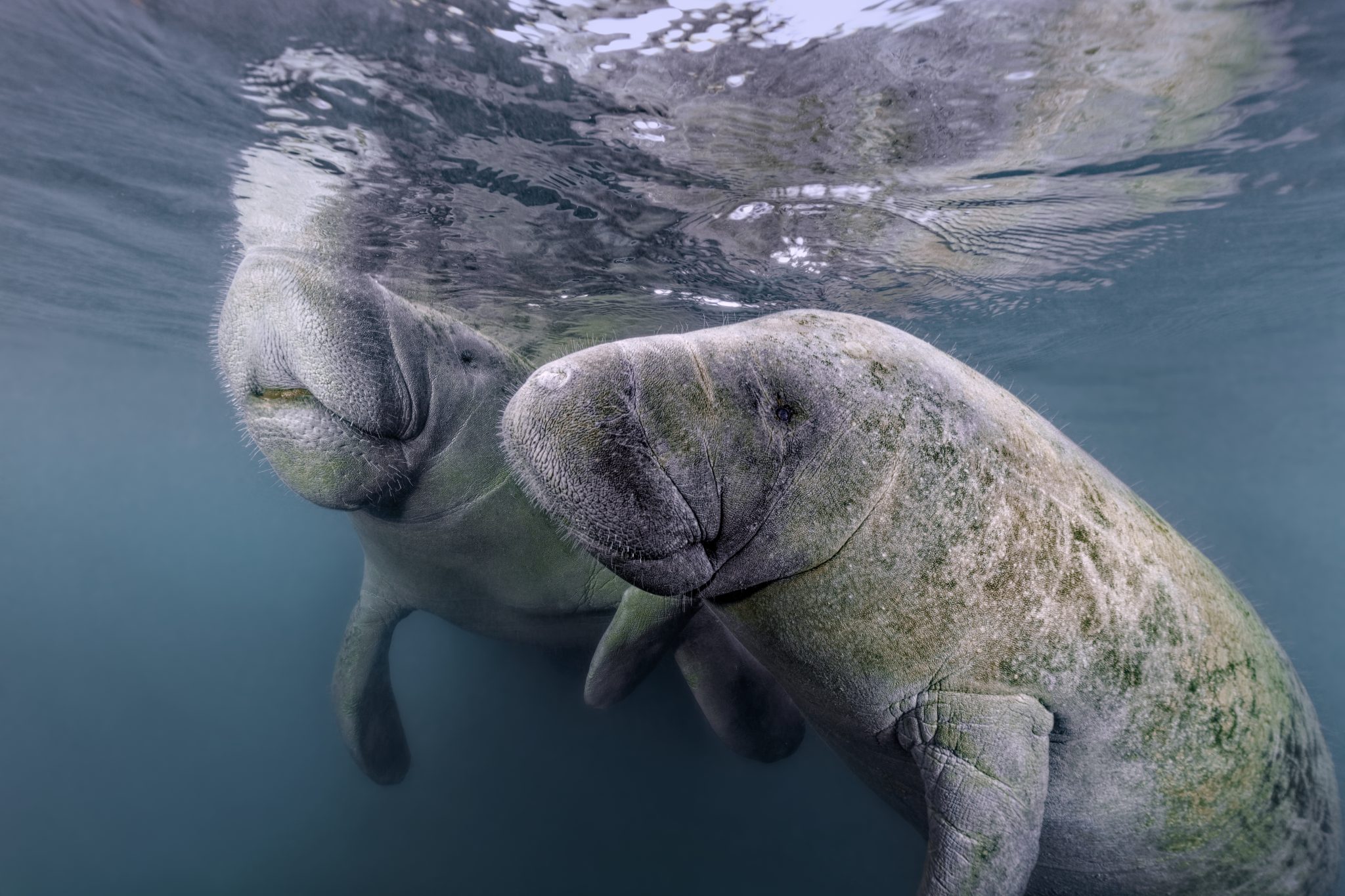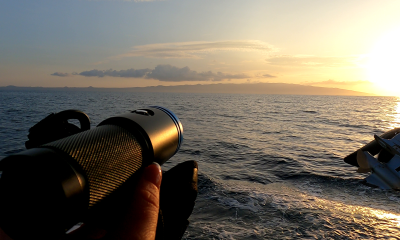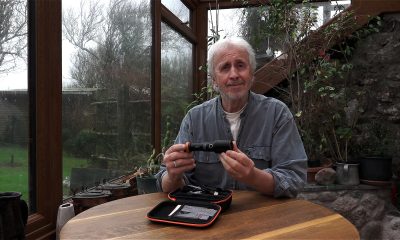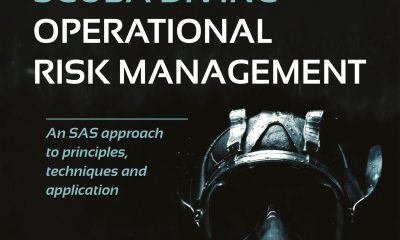News
Book Review: The Ship Beneath The Ice by Mensun Bound

Review by Professor Fred Lockwood
 There are thousands of ship wrecks around the world. Many are associated with both dramatic and tragic events. Some have been captured in paintings and photographs. Stories about a few, like the Titanic, have captured our imagination and entered folk law.
There are thousands of ship wrecks around the world. Many are associated with both dramatic and tragic events. Some have been captured in paintings and photographs. Stories about a few, like the Titanic, have captured our imagination and entered folk law.
The loss of the Endurance, crushed by ice and sinking 3000 metres to the bottom of the Weddell Sea, Antarctica on 21st November 1915, and Ernest Shackleton’s incredible journey to safety, is one of these amazing stories. If one image captures this story it is the iconic photograph of the Endurance, taken by Frank Hurley, just before the ship sank. It appears on the cover of the book.
When the Endurance sank Shackleton and his crew spent months on the ice as they drifted north – waiting for the right time to drag lifeboats towards open water. They sailed in three open boats, in conditions difficult to imagine, 346 miles to the uninhabited Elephant Island. Then, with five crew, Shackleton sailed another 800 miles to South Georgia and then trekked overland to where the expedition had started months earlier. Not a single crew member was lost.
It is noteworthy that whilst virtually all the credit for their survival is given to Shackleton it was his captain, Frank Worsley, who’s navigation saved three open boats rowing in freezing conditions. It truly was ‘a remarkable feat of nautical wayfinding.’ p 79.
Mensun Bound’s book, The Ship Beneath The Ice, recounts two expeditions, in 2019 and 2022, to find the Endurance. It’s an account based on his daily observations during the two expeditions he led, intertwined with diary entries, books and note books written by those on Shackleton’s Imperial Trans-Antarctic Expedition. On each day of the search Bound provides precise coordinates for the search ship so that the reader can check their progress or rather the higgledy-piggledy trace around ice bergs, impenetrable ice flows and through sheets of sea ice.
Bound adopts a relaxed, conversational, uninhibited style that belies a forensic account of both his own search and Shackleton’s ill-fated expedition. In doing so he also provides a reassessment of the myths surrounding Shackleton, not to undermine his achievements, but to acknowledge the contribution of others. The unending cold, exhaustion, lack of food and looming death faced by Endurance’s crew mirrors the challenges and frustrations that Bound’s Expedition faced and their looming failure.
The Ship Beneath The Ice also reveals the pressure Bound and the expedition were under to find the ship. To the uninitiated it would seem to be a simple process to locate the Endurance; it wasn’t. The navigator on the Endurance, Captain Worsley, had provided a location – but it was based on extremely difficult sextant readings and chronometers of unknown accuracy. If Captain Worsley’s coordinates for the sinking of the Endurance were out by a mere one and a half degrees it equated to about 20 miles; they would never find the Endurance. What’s more, Bound’s search area was dominated by massive ice flows, treacherous weather and a limited window in time. He describes the ice as ‘…gnarled, mangled, multiyear stuff that was over five metres thick and tough as teak.’ p. 172. The brutal weather included driving snow, forty knot winds and seven metre waves! They also only had weeks to complete the search before winter. It is in this context that Bound shares his own emotions; the anticipation of success and the fear of failure; emotions similar to that of Endurance’s crew.
The author includes black and white photographs taken on Shackleton’s Expedition with colour photographs taken during the search. Throughout he draws upon published books, reports and accounts, provides detailed acknowledgements and appendices, text and picture credits, a selected Shackleton bibliography as well as a comprehensive index.
There is little to criticise in Mensun Bound’s account of the search for Endurance. It is a compelling read. If I have one criticism it would be the lack of a fold out map of his search area. It would allow the reader to follow the search more clearly and appreciate the difficulties they faced in such a hostile environment.
After reading The Ship Beneath The Ice I suspect you will reconsider the contribution of marine archaeologists, like Mensun Bound, and reassess the adulation given to Shackleton and possibly other famous figures.
———————————————————————————————————–
Mensun Bound is a British marine archaeologist and diver. He was born in the Falkland Islands in February 1953 and during his career has discovered many of the world’s most famous wrecks. These include the WWI Imperial German Navy cruiser the SMS Scharnhorst, an Etruscan 6th-century BC shipwreck off the coast of Italy and the Hoi An Wreck, off the coast of Vietnam.
He is a trustee of the Falklands Maritime Heritage Trust. The Ship Beneath The Ice is his first book.
Blogs
Heading out on the water this Summer? Watch for manatees

As National Safe Boating Week approaches, Save the Manatee® Club is urging boaters, and anyone that enjoys Florida’s waterways, to respect and protect the defenseless manatees that inhabit our shared waterways. From May 18 to 24, leading up to Memorial Day Weekend, the campaign aims to raise awareness about recreational boating safety and the importance of safeguarding imperiled manatees during the summer boating season. This week also emphasizes the importance of encouraging boaters to enroll in a boating safety course.
Manatees are semi-migratory marine mammals that are commonly found in shallow estuaries, bays, rivers, canals, and coastal areas throughout Florida and neighboring states. With some manatees venturing as far west as Texas and as far north as Massachusetts, collisions between these gentle giants and watercraft have become distressingly frequent. Boat propellers and high-speed collisions pose significant threats to manatees, often resulting in severe injuries or even death.
Save the Manatee Club is calling on all water enthusiasts to follow essential manatee safety tips to ensure the well-being of the imperiled manatee:
- Obey Speed Zone Signs: Familiarize yourself with and adhere to posted speed limits to prevent collisions with manatees.
- Reduce Glare with Polarized Sunglasses: Wear polarized sunglasses to enhance visibility and spot manatees below the water’s surface.
- Recognize Manatee Signs: Learn to identify signs of manatees in the area, such as swirls or flat spots on the water caused by their movements.
- Respect Manatee Sanctuaries: Keep a safe distance from posted manatee sanctuaries and avoid pursuing or harassing these marine mammals, as it is illegal and can disrupt their natural behaviors.
- Report Distressed Manatees: In Florida, promptly report distressed, injured, tagged, or orphaned manatees to the Florida Fish and Wildlife Conservation Commission (FWC) at 1-888-404-FWCC (3922). Outside of Florida, report sightings to the appropriate state agency or rescue organization. A list of agencies to contact is available at savethemanatee.org/report.
- Protect Seagrass Beds: Avoid boating over seagrass beds and shallow areas where manatees may be feeding. Stick to deep water channels while remaining vigilant, as manatees also utilize these channels during their travels.
- Dispose of Fishing Line Responsibly: Anglers should properly dispose of or recycle used fishing line to prevent entanglement hazards for manatees.
“Each year, National Safe Boating Week provides an excellent reminder for all of us to be aware that we share our waterways with vulnerable manatees,” emphasized Patrick Rose, Aquatic Biologist and Executive Director of Save the Manatee Club. “With the recent Unusual Mortality Event on Florida’s East Coast claiming an alarming number of manatees’ lives, it is more crucial than ever to prevent preventable deaths caused by watercraft collisions. By following manatee-safe boating guidelines, such as obeying speed zones and remaining vigilant for manatees, everyone on the water can contribute to the protection of these gentle giants.”
Save the Manatee Club offers a range of free materials to help safeguard manatees and raise awareness about manatee-safe boating practices. Shoreline property owners and park or marina managers can order aluminum dock signs to alert others about the presence of manatees in their areas. Boaters and paddlers can request packets containing a safety tips card, a waterproof boat banner, and a decal to display on their vessels, providing the number to report manatees in distress. To view and request these materials, visit savethemanatee.org/resources. Save the Manatee Club will also be hosting a live webinar for National Safe Boating Week on Tuesday, May 21st at 6pm EST. To register, visit savethemanatee.org/register.
Marine Life & Conservation Blogs
Book Review: Shells of the World

Shells of the World: A Natural History by M.G. Harasewych
Shells of the world is a guide to the world of marine, shelled molluscs. And what a varied and interesting world it is. Some of my favourite things to find on a dive are detailed in this book, including disco clams (or Electric File Clams as they are correctly names), the cephalopods, giant clams and sea hares. There are also many on my wish list, top of which is the Nautilus.
Each chapter provides a detailed description of the species, along with beautiful images. You can dive deeper and discover where they live, both with global distribution and the habitat they prefer. Learn about their diet, reproduction and diversity.
Having dipped in and out of this lovely book over the past few weeks, it has inspired me to learn more about this group of animals that we see on most divers, wherever we are in the world. Some of the shells are incredibly intricate and beautiful. I have always agreed with never collecting, or touching, marine life. The description of a certain set of cone shells should be a warning to those that are happy to pick up marine life! One of the cone shells has a local name called the cigarette snail. Why? Because once the venom is in your system from this animal, you only have time to smoke one cigarette before the affects of the venom are fatal!
What the publisher says:
Mollusks are invertebrate animals with a remarkable natural history and a rich fossil record, and their shells are prized for their breathtaking variety and exquisite beauty. Shells of the World provides a wide-ranging look at the incredible diversity of marine mollusks. An informative introduction outlines the lineages covered, followed by a directory section, split into classes, that profiles a broad selection of different taxa to give a sense of their sheer numbers and variety.
- Features hundreds of beautiful color photos, depicting both the live animals and their shells
- Discusses mollusk evolution, anatomy, life cycles, behavior, and ecology
- Describes unique characteristics, distribution, habitat, and size
- Provides valuable insights into the conservation of the world’s marine mollusks
- Ideal for malacologists and shell collectors everywhere
About the Author:
M. G. Harasewych is research zoologist emeritus and former curator in the Department of Invertebrate Zoology at the Smithsonian Institution’s National Museum of Natural History. A fellow of the American Association for the Advancement of Science, he is the author (with Fabio Moretzsohn) of The Book of Shells: A Life-Size Guide to Identifying and Classifying Six Hundred Seashells.
Book Details
Publisher: Princeton University Press
Hardcover
Price: £25
ISBN: 9780691248271
Published: 9th April, 2024
-

 Marine Life & Conservation Blogs3 months ago
Marine Life & Conservation Blogs3 months agoCreature Feature: Swell Sharks
-

 Gear Reviews4 weeks ago
Gear Reviews4 weeks agoGEAR REVIEW – Revolutionising Diving Comfort: The Sharkskin T2 Chillproof Suit
-

 Blogs2 months ago
Blogs2 months agoMurex Resorts: Passport to Paradise!
-

 Blogs3 months ago
Blogs3 months agoDiver Discovering Whale Skeletons Beneath Ice Judged World’s Best Underwater Photograph
-

 News3 months ago
News3 months agoPADI Teams Up with Wellness Brand Neuro to Drive Ocean Change and Create a Blue State of Mind
-

 Gear Reviews3 months ago
Gear Reviews3 months agoGear Review: Oceanic+ Dive Housing for iPhone
-

 Marine Life & Conservation2 months ago
Marine Life & Conservation2 months agoSave the Manatee Club launches brand new webcams at Silver Springs State Park, Florida
-

 Blogs2 months ago
Blogs2 months agoSeagrass Awareness Month brings critical food source for Manatees to centre stage
















